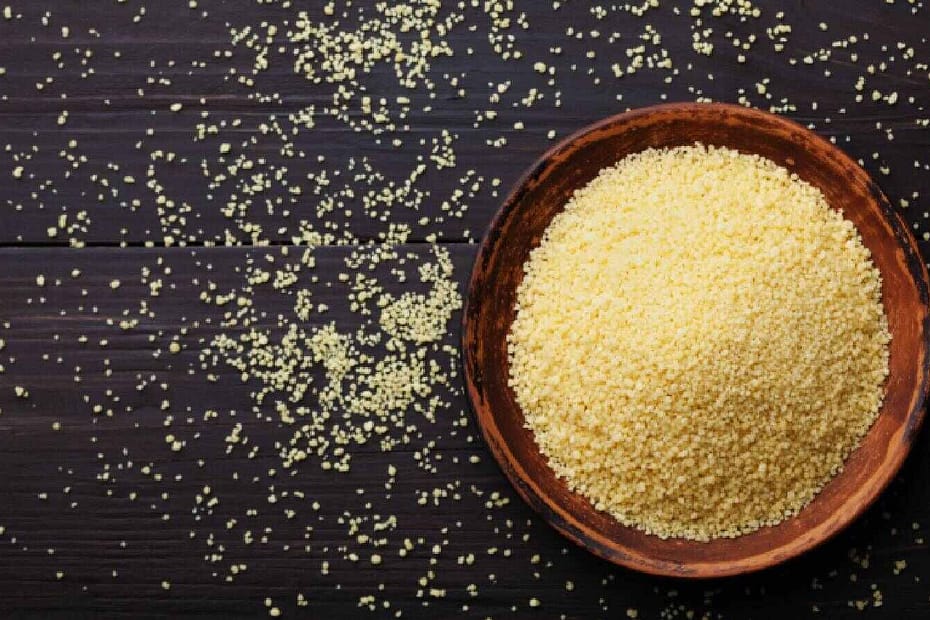When it comes to weight loss, choosing nutrient-rich ingredients can make a significant difference in your journey. One such superfood is semolina, a coarse flour derived from durum wheat. Known for its high protein, fibre, and vitamin content, semolina can be a valuable addition to a weight-loss-friendly diet. From keeping you full longer to stabilizing blood sugar levels, the benefits of semolina for weight loss are impressive.
Here’s everything you need to know about semolina, its nutritional value, and how to incorporate it into your meals.
What Makes Semolina a Healthy Option?
Semolina is a versatile, nutrient-packed ingredient. According to the National Institutes of Health, semolina contains essential vitamins like B-complex, minerals such as magnesium and iron, and is rich in protein and dietary fibre. These attributes make it an excellent choice for boosting energy, improving digestion, and supporting weight loss.
Nutritional Value of Semolina
The nutritional profile of semolina is one of the reasons it’s ideal for weight loss. According to the US Food and Drug Administration (FDA), 100 grams of semolina contains:
- Calories: 360 kcal
- Protein: 12.7 g
- Fibre: 3.9 g
- Carbohydrates: 72.8 g
- Fat: 1.05 g
- Calcium: 17 mg
- Iron: 1.23 mg
- Magnesium: 47 mg
Top Semolina Benefits for Weight Loss
1. High in Fibre
Semolina is rich in dietary fibre, which aids digestion and helps you feel full for extended periods. According to research published in the Journal of Cereal Science, fibre-rich foods like semolina prevent overeating by promoting satiety, reducing overall calorie intake.
2. Low Glycemic Index
Semolina has a low glycemic index (GI), meaning it releases glucose slowly into the bloodstream. This helps stabilize blood sugar levels, reducing hunger pangs and energy crashes. Studies in the Journal of Nutrients highlight that low-GI diets are effective in managing weight and reducing adiposity.
3. Rich in Protein
Semolina provides over 7 grams of protein per 1/3 cup (56 grams) of uncooked semolina. Protein is essential for muscle repair, metabolic health, and satiety. A protein-rich diet also enhances calorie burning, which aids in weight loss.
4. Low in Fat but Energy-Rich
Semolina is naturally low in fat, making it a calorie-conscious choice. Its complex carbohydrates provide sustained energy, which is particularly beneficial for those maintaining an active lifestyle or workout routine.
How to Incorporate Semolina into Your Diet
The versatility of semolina allows it to be used in a variety of dishes, from breakfast to dinner.
Breakfast Options
- Upma: A savory dish made with semolina, vegetables, and minimal oil.
- Semolina Porridge: Cooked with skimmed milk or water, topped with nuts and seeds for added nutrients.
Snacks
- Semolina Pancakes: A quick option made with vegetables and minimal oil.
- Baked Semolina Crackers: A crunchy, low-calorie snack.
Main Meals
- Semolina Khichdi: A light dish made with lentils, vegetables, and spices.
- Semolina Idlis or Dosas: Steamed or lightly pan-fried versions are perfect for lunch or dinner.
Desserts (Occasionally)
- Sheera (Halwa): Prepared with jaggery instead of sugar and minimal ghee.
- Semolina Pudding: Made with milk and reduced sweetness for a healthier dessert option.
Tips for Using Semolina for Weight Loss
- Control Portions: Stick to recommended serving sizes (½ to 1 cup of uncooked semolina) to avoid calorie surplus.
- Choose Whole-Grain Semolina: Opt for whole-grain versions to maximize fibre and nutrient content.
- Pair with Nutrient-Dense Foods: Combine semolina with vegetables, lentils, or yogurt for balanced meals.
- Avoid Excess Fats and Sugars: Minimize the use of ghee, oil, or sugar in semolina dishes to keep them weight-loss-friendly.
Precautions and Considerations
While semolina has numerous benefits, it’s essential to consume it correctly:
- Avoid overeating, as excessive portions can lead to calorie overload.
- If you have gluten intolerance or celiac disease, semolina is not suitable due to its wheat content.
- Consult your doctor before adding semolina to your diet if you have specific medical conditions.
FAQs About Semolina for Weight Loss
1. How much semolina can I eat daily for weight loss?
Stick to ½ to 1 cup of uncooked semolina per day, adjusting portions based on your caloric needs.
2. What’s the best time to eat semolina for weight loss?
The ideal time to consume semolina is during breakfast or lunch, as it provides sustained energy for daily activities. Avoid eating it late at night.
3. Can semolina be part of a gluten-free diet?
No, semolina is derived from wheat and contains gluten. Those with gluten intolerance should avoid it.
Semolina: A Weight-Loss Ally
Incorporating semolina into your diet can be a game-changer for weight loss. Its high fibre, protein content, and low glycemic index make it an excellent choice for those looking to shed extra kilos while staying nourished.
By preparing semolina dishes mindfully, controlling portions, and pairing it with nutrient-dense foods, you can make the most of its benefits. Combine this with regular exercise and a balanced diet for the best results.
Start experimenting with semolina recipes today and let this superfood help you achieve your weight-loss goals!
Read More https://hetechme.com/best-bgmi-sensitivity-settings-for-camera-ads-and-gyroscope/

